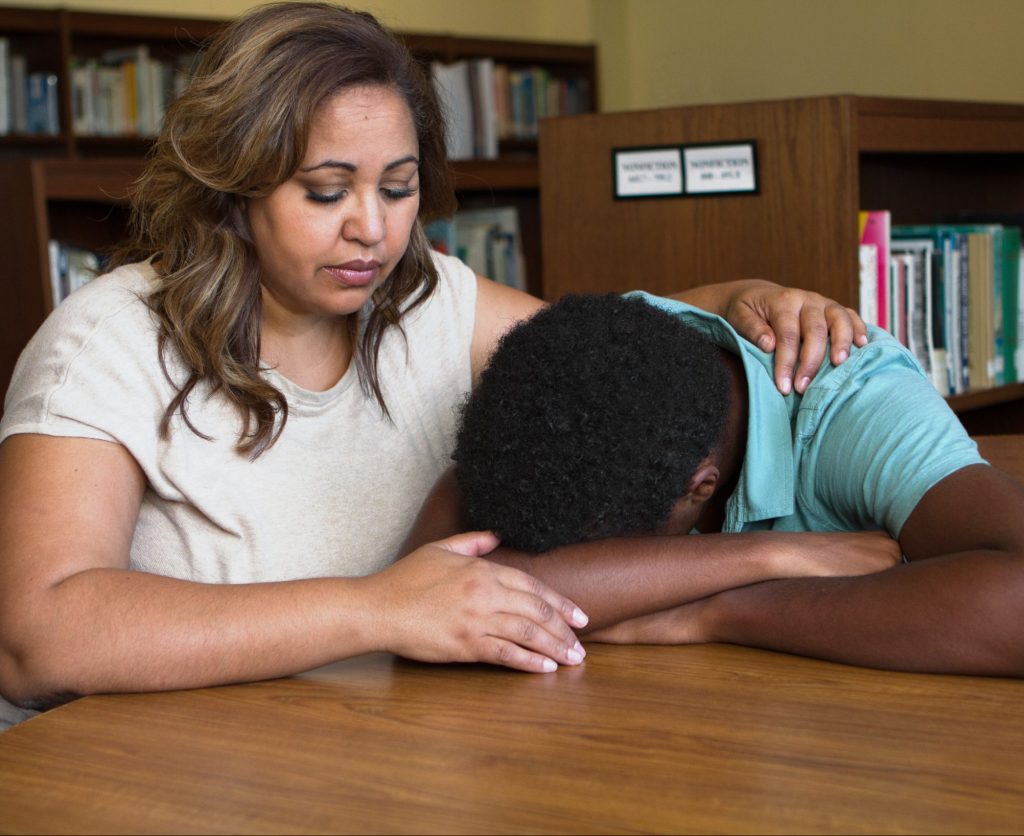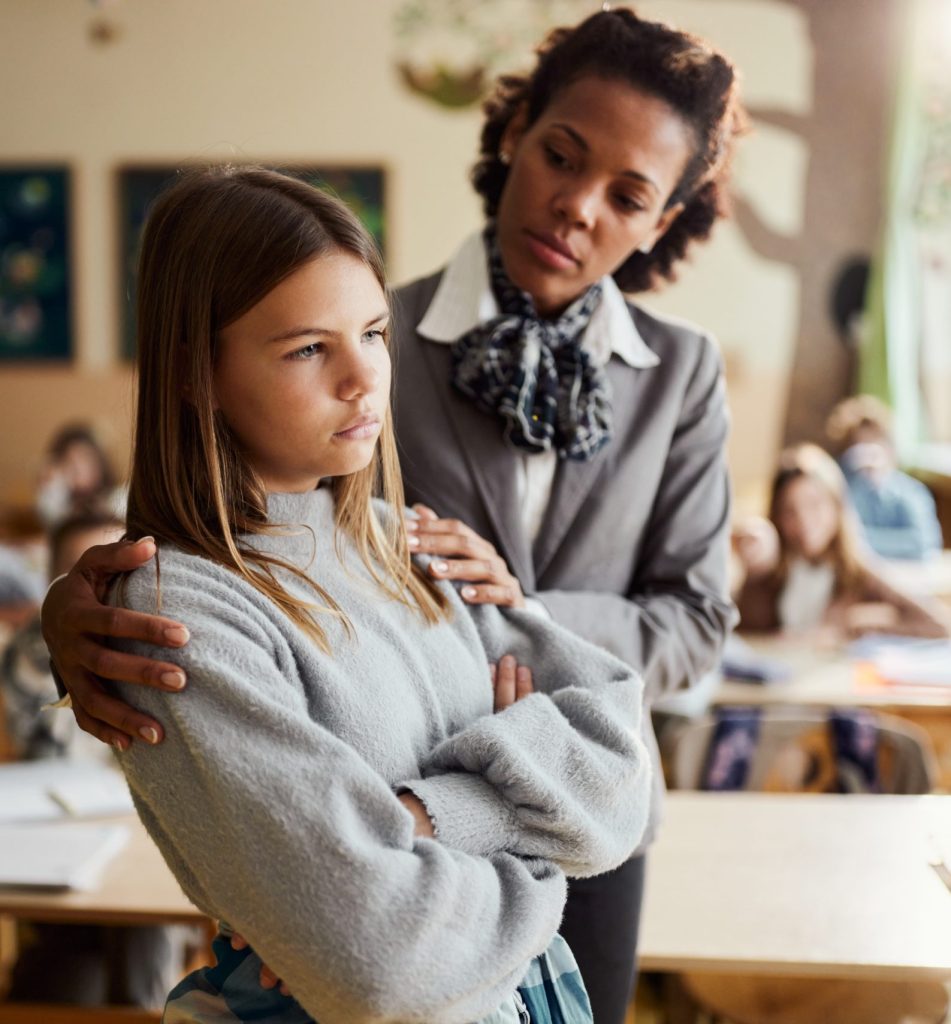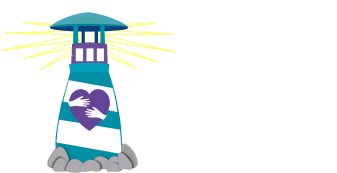School resources
Prevention starts with you
The teenage years hold many new and wonderful experiences: going to new schools, meeting new people and friends, and learning new things. It is an exciting time for many adolescents. For other teens, it can be a period of loneliness and confusion as youth also deal with new experiences such as new relationships, decisions about the future, and the physical changes that are taking place in their bodies. Between 2009-2013 Idaho has lost 85 school-aged children to suicide. HOWEVER, with the right knowledge, suicide is the most preventable form of death.

2010 Study of high school and Junior High Counselors
A 2010 study of Idaho high school and Jr. high school counselors and social workers showed that while 97% of respondents had experienced a potentially suicidal student, only 55% felt well prepared to handle such a student. The same study stated that 64% of school counselors felt ill prepared to deal with the aftermath of a student suicide, or postvention. Much anecdotal evidence collected by SPAN Idaho and other suicide prevention stakeholders in Idaho also shows that schools often lack the information necessary to effectively conduct suicide prevention, intervention and postvention.
In an effort to assist Idaho schools with issues related to youth suicide, SPAN Idaho, in collaboration with the State Department of Education, the Awareness to Action Youth Suicide Prevention Project at the Institute of Rural Health at Idaho State University and other stakeholders, has developed the following protocols for school suicide prevention. These protocols are concise and meant as a quick yet critical guide based on well-researched best practices in youth suicide prevention, intervention and postvention. These guidelines are not exhaustive and not meant to replace, but rather support, the development of a school’s or district’s own suicide prevention plan.

Rationale for school based prevention
- School personnel spend more time with our youth than any other professionals. Often more time than parents.
- School districts have been found liable for not offering suicide prevention programs, for providing inadequate supervision of at-risk students, and for failing to notify parents when their children were suicidal.
- Schools must demonstrate appropriate, “good faith” efforts to prevent suicide from occurring.
- In order to protect students, school personnel must be trained in identifying at-risk students and making proper interventions.
- The tragedy of suicide is beyond measure, and evidence based prevention and intervention efforts are effective.
Idaho Statute
Title 33
Education
Chapter 5
District Trustees
33-512.Governance of schools. The board of trustees of each school district shall have the following powers and duties: (4) To protect the morals and health of the pupils
Idaho Case Law
In Brooks v. Logan, 127 Idaho 44, 903 P.2d 73 (1995) (Brooks I), the Idaho Supreme Court held that a teacher and a school district owe a duty to warn or otherwise take action when confronted with ambiguous, circumstantial evidence of a student’s suicidal tendency. In response to this broad recognized duty, the Idaho legislature enacted I.C. § 33-512B to limit the duty of school employees to situations when there is a known suicidal tendency.
Administrative Rules
IDAPA 08.02.03.160 - Safe environment and discipline
Each School District will have a comprehensive district wide
policy and procedure encompassing the following:
- School Climate
- Discipline
- Student Health
- Violence Prevention
- Gun-free Schools
- Substance Abuse - Tobacco, Alcohol, and Other Drugs
- Suicide Prevention
- Student Harassment
- Drug-free School Zones
- Building Safety including Evacuation Drills
- Districts will conduct an annual review of these policies and procedures
For More Information see Suicide Prevention in Schools: Legal Considerations and Liability
School-based suicide prevention program overview
Schools can help prevent suicide by providing teachers and students with the mechanisms necessary to identify and respond to students who are at risk of suicide and self-destructive behaviors. The following are some important steps that schools can take to reduce the risk of suicide among their students:
- Implement a school-based prevention program. These programs can be especially effective when implemented in the context of a comprehensive risk prevention or health promotion program. Such programs can reduce levels of self-harm and other risk behaviors as well as improve levels of wellness and the academic performance of the school.
- Implement a gatekeeping program. Suicide prevention gatekeeping programs train those who have regular contact with young people, such as school staff and parents/guardians, to do the following:
- Actively intervene, usually by talking to the young person in ways that explore the level of risk without increasing it.
- Refer young people at risk to the necessary services. For more information on prevention and intervention, see links below.
- Recognize behavioral patterns and other warning signs that indicate that a young person may be at risk of suicide.
- Create a comprehensive school crisis or intervention plan. An intervention plan should include procedures for addressing students who make an attempt to harm themselves as well as those who are contemplating it. It should also provide some guidance for the role of individual staff members in identifying and responding to potential suicidal or violent behavior in students and how to respond when actual violence takes place.
- Be prepared to engage in postvention. “Postvention” is a term used to describe measures implemented after a crisis or traumatic event to reduce the risk to those who have witnessed or been affected by the tragedy. The suicide, or violent or unexpected death, of a student, teacher, or even a celebrity can result in an increased risk of suicide for other vulnerable young people. Although rare, a suicide in the community (or even a remote suicide that receives substantial press coverage) can contribute to an increased risk of suicide. Appropriately responding to a tragedy that may put students at risk is an essential part of any crisis or suicide prevention plan.
The Role of the school
- Detection/awareness. All school personnel (including teachers, paraprofessionals, administrators, support staff, bus drivers, and cafeteria workers) who interact with students on a regular basis should know the warning signs of suicide and the importance of sharing their concerns about a student with an appropriate adult, such as the school counselor.
- Parent notification. School personnel who are aware that a student is considering suicide must contact the student’s parents or guardians. Ideally, this contact should be made face to face and should include recommendations to parents about how to decrease the risk of suicide by increasing supervision, removing lethal means, and finding appropriate mental health services for the young person. A confidential record of parent notifications should be kept.
- Support for students at risk of suicide. School personnel, including psychologists and counselors, should support students who are at risk of suicide with counseling, monitoring, and follow-up services.

More on prevention, intervention, and postvention
Help bring resources, hope, and support to those
affected by suicide
donating and getting involved
If you are interested in volunteering with us on a regular basis, please fill out the form. You may also join us at our monthly community meetings which are held the first Thursday of each month. See our events page for more information.
Get Involved
Donate
Get Involved
Donate
Support Community Suicide Prevention Through A Donation


